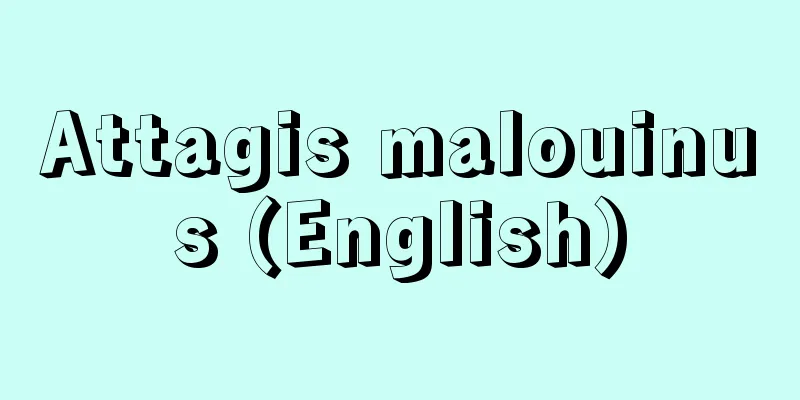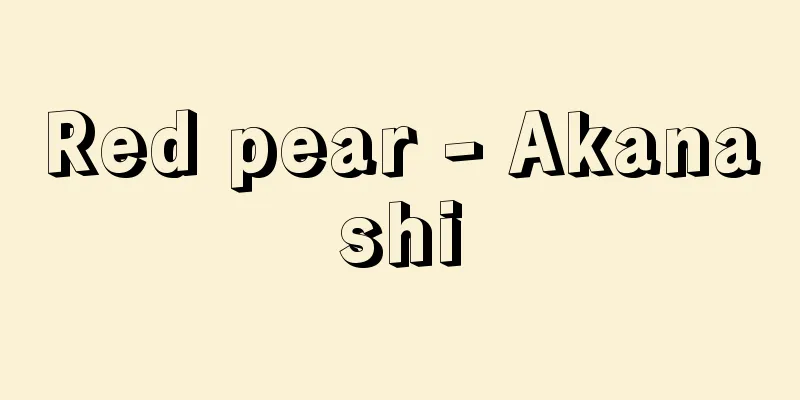Ensemble (English: ensemble) French

|
A form of musical performance. In contrast to solo performance, it refers to a collaboration between multiple performers. In the narrow sense, this term is only used for instrumental music, but in the broad sense, it can also include vocal choruses. Just as the French word ensemble means "together" and also means "unity" including clothing and furniture, the characteristic of ensemble is that the whole as a collection of parts becomes music. Therefore, music that takes the form of an ensemble often reflects the structure, customs, and values of a society. Examples include the bamboo flute duet of the Iatmoy tribe of Papua New Guinea, which is an expression of dualism in kinship organizations, and the aim of religious or artistic unity in the shakuhachi duet, koto and shamisen duets, and the ai shamisen (a semi-permanent pairing of an instrumentalist and a vocalist) in joruri and nagauta. Similarly, the ensemble (singing) forms seen in national anthems, revolutionary songs, military music, and religious music (in churches and temples) are directly linked to the heightened sense of solidarity according to their respective purposes. In Western orchestras, Southeast Asian gamelan and other music, and East Asian gagaku, there is a hierarchy between instruments, groups of instruments, and leaders (conductors and main players), which is not unrelated to the structure of society in general. Due to differences in musical effects, duets (vocals), trios (vocals), and combinations of these can be independent performance forms (duos, trios, quartets, etc.), or they can be used at specific points in a piece of music (performance) for compositional purposes. Examples of the latter include the use of duets and choruses at the climax of an opera, or the intentional placement of small ensembles in an orchestral piece. In general, the larger the ensemble, the more clearly the musical functional roles of the instruments (groups) are differentiated. This is usually determined according to the characteristics of the instruments, such as melody, rhythm, harmony, collotomy (musical punctuation), and ornamentation. [Osamu Yamaguchi] [Reference] |Source: Shogakukan Encyclopedia Nipponica About Encyclopedia Nipponica Information | Legend |
|
音楽の演奏形態の一つ。独奏とは反対に複数の奏者が協同する場合をさす。狭義には器楽についてのみこの用語が使われるが、広義には声楽の場合の合唱を含めることもできる。フランス語のアンサンブルが「いっしょに」という語義と同時に、衣服や家具まで含めた「統一体」という意味をもっているように、部分の集合としての全体が音楽となるところに特徴がある。したがって、合奏形態がとられる音楽は、社会の構造・慣習・価値観などが反映されていることが多い。その例としては、パプア・ニューギニアのイアトモイ部族の竹笛二重奏が親族組織上の二元論の表明であったり、尺八の連管、箏(こと)・三味線の連弾(つれびき)、浄瑠璃(じょうるり)や長唄(ながうた)での相(あい)三味線(楽器担当者と声楽家が半永続的にペアとなること)などにおいて、宗教的ないし芸術的一体感を目ざすことがあげられる。同様に、国歌、革命歌、軍楽、宗教音楽(教会や寺院での)などにみられる合奏(唱)形態も、それぞれの目的に応じた連帯感の高まりに直結している。西洋の管弦楽(オーケストラ)、東南アジアのガムランをはじめとする音楽、東アジアの雅楽などには、楽器、楽器群、リーダー(指揮者・主奏者)の間にヒエラルキーが存在し、一般社会の構造と無関係ではない。 音楽的な効果の違いからは、二重奏(唱)、三重奏(唱)などやそれらの組合せの形態が、独立した演奏形態(ドゥオ、トリオ、カルテットなど)となることもあるし、ある楽曲(演奏)のなかで構成上の意図により特定の箇所で使い分けられることもある。後者の例としては、オペラのクライマックスで重唱・合唱を使ったり、管弦楽曲のなかで意識的に小編成の合奏を配置することがある。一般に大規模な合奏になるほど、楽器(群)の間で音楽的機能上の役割分担が明確に区別される。それは通常、旋律、リズム、和声、コロトミー(音楽的句読法)、装飾など、楽器の特性に応じて決定される。 [山口 修] [参照項目] |出典 小学館 日本大百科全書(ニッポニカ)日本大百科全書(ニッポニカ)について 情報 | 凡例 |
Recommend
Ito Suketoki
1185-1252 A military commander of the Kamakura pe...
Morning envoy - Choshuushi
〘Noun〙 Under the ritsuryo system, one of the four ...
Echapée - Echapée
…(5) Anticipation: This is the case when the harm...
Mecca - Mekka (English spelling)
A major city in the Hijaz region in western Saudi...
chromaticism
…The chromatic scale has a long history, and was ...
Cadiz - Cadiz (English spelling)
It is the capital of the province of Cadiz in the...
Agitator truck
⇒Mixer truck Source: About Shogakukan Digital Daij...
Kefe
…It was called Kaffa at that time and was the cen...
Linwa
Korean proletarian poet and literary theorist. Hi...
Hakka - Mint
The language of the Hakka people, a Han ethnic gro...
Giusti - Giuseppe Giusti
Italian poet. Born into a wealthy family in Tusca...
Korean Blacksmith - Karakanuchi
〘Name〙 One of the blacksmiths who served the Great...
Weird Tales
An American pulp magazine (1923-54). Along with De...
Adams Bridge
...The entire strait lies on the continental shel...
Varanus salvadorii (English spelling)
… [Takahiro Matsui]. … From Komodo Dragon …Monito...









